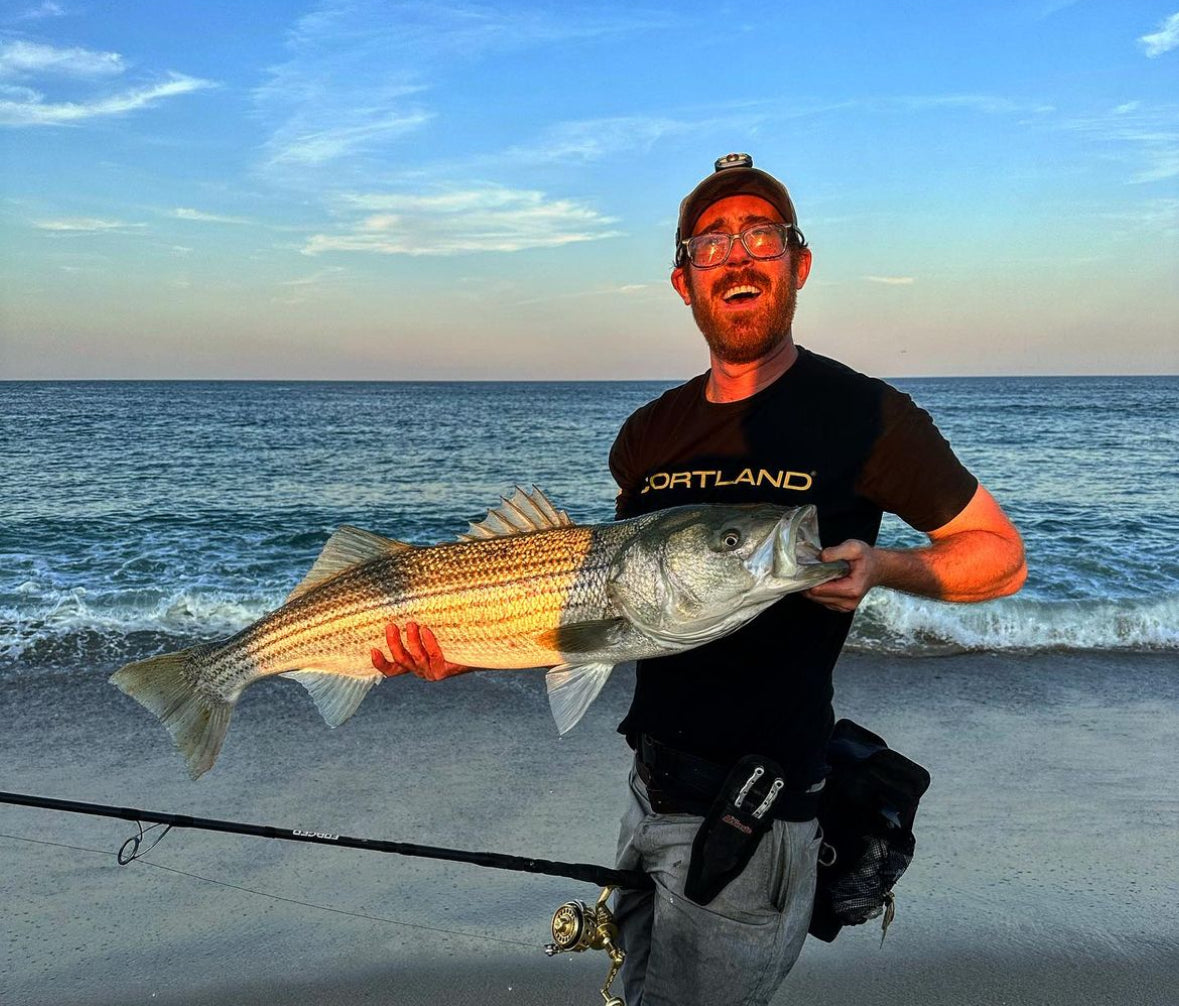Title: Mastering the Art of Striped Bass Blitz Fishing: Techniques to Catch More Fish
Introduction
If you're an angler who loves the thrill of chasing big, powerful fish, then striped bass blitz fishing should be on your bucket list. Witnessing a striped bass blitz is a heart-pounding experience that can yield incredible catches. In this blog post, we'll explore what a striped bass blitz is, where and when to find them, and the techniques you can use to catch more fish during these frenzied feeding frenzies.
Understanding the Striped Bass Blitz.

A striped bass blitz, also known as a "bait blitz" or "feeding frenzy," occurs when a school of striped bass pushes baitfish to the surface, trapping them and feeding aggressively. This spectacle often involves seagulls and other seabirds diving to snatch disoriented baitfish. It's a visual and auditory spectacle that's not only exciting to watch but can also provide excellent fishing opportunities.
- Location, Location, Location
To increase your chances of encountering a striped bass blitz, you need to know where to look. Blitzes are more common in certain areas and during specific times of the year. Here's what to keep in mind:
-
Season: Striped bass blitzes are most likely to occur during the fall, as bass migrate south along the Atlantic coast. Spring can also offer good blitz opportunities as they head back north.
-
Location: Look for areas with strong currents, like inlets, river mouths, jetties, and underwater structures such as shoals, humps, and sandbars. Striped bass like to ambush baitfish in these areas.

-
Time of Day: Blitzes are often more active during low-light conditions, such as dawn and dusk. However, they can happen throughout the day, so be prepared to adapt.
- Proper Gear and Tackle
When targeting striped bass during a blitz, you'll want to use the right gear:
-
Rods and Reels: A medium to heavy-action spinning or baitcasting rod with a reel that can hold at least 200 yards of 20-40lb braided line is recommended. This will give you the power and line capacity needed to handle large striped bass.
-
Lures: Topwater lures like poppers, pencil poppers, and soft plastic swimbaits are effective during a blitz. Choose lures that mimic the size and color of the baitfish being targeted.

-
Terminal Tackle: Use a strong leader, typically 20-30lb fluorocarbon, to prevent the bass from cutting your line with their sharp gill plates. Tie your lures with loop knots to enhance their action.
- Casting and Retrieving Techniques
Once you've located a striped bass blitz, it's essential to cast your lure accurately and work it effectively to entice strikes:
-
Long Casts: Try to make long casts to avoid spooking the fish. Approach the blitz slowly and cast ahead of the feeding fish.
-
Varied Retrieval Speeds: Experiment with your retrieval speed. Sometimes, a fast retrieve will trigger strikes, while at other times, a slow, twitchy retrieve may work better.
-
Keep an Eye on Birds: Keep an eye on the diving birds. They can lead you to the action. Striped bass often push baitfish to the surface, causing the birds to dive.
Conclusion
Fishing a striped bass blitz is an exhilarating experience that combines the thrill of the chase with the rewards of a bountiful catch. Remember to stay patient, adapt your techniques as needed, and enjoy the adrenaline rush that comes with battling these powerful fish. With the right knowledge and techniques, you can increase your chances of catching more striped bass during a blitz and create unforgettable memories on the water. So, grab your gear and get ready for some heart-pounding action!!

